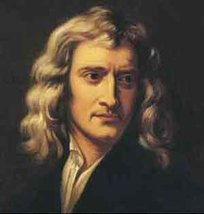Bermuda fitted dinghies racing in Granaway Deep. (Photo: Tom Clarke)
|
Home >> AP Physics I >> Newton's Laws
|
Forces >>
|

Galileo worked on how objects move and developed the science of kinematics. Sir Isaac Newton built on this work to discover why objects move the way they do. He developed his famous three laws of motion:
A thorough understanding of these laws and the application of them to a variety of situations is essential in any physics course at this level. With regards to problems: Newton's first law tends to be used in terms of constant speed or statics where the forces are balanced (forces up = forces down and forces left = forces right) and the second law in relation to the dynamics of an accelerating object. It is vitally important to be able to break a force at an angle into components and to use Pythagoras to recombine the components again.
- An object at rest remains at rest unless acted on by a resultant force, an object in motion continues to move in a straight line at a constant speed unless acted on by a resultant force. Or more simply: a resultant force is required to change an object's motion.
- The acceleration of an object is proportion to the resultant force applied and inversely proportional to the mass of the object. \(a=\frac{\sum F}{m}\)
- For every action there is an equal and opposite reaction.
A thorough understanding of these laws and the application of them to a variety of situations is essential in any physics course at this level. With regards to problems: Newton's first law tends to be used in terms of constant speed or statics where the forces are balanced (forces up = forces down and forces left = forces right) and the second law in relation to the dynamics of an accelerating object. It is vitally important to be able to break a force at an angle into components and to use Pythagoras to recombine the components again.
- 12 - 18% exam weighting for the Multiple Choice questions
- 19 - 22 lessons